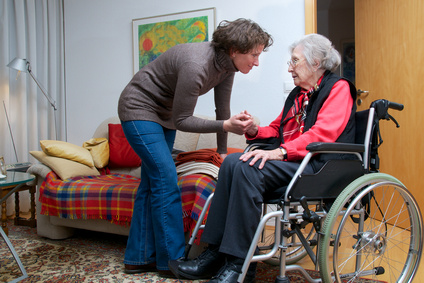
Osteoporosis is a common but often underestimated condition that affects millions of individuals, primarily the elderly. This silent disease weakens bones, making them more prone to fractures, and can have a significant impact on a person's quality of life. In this article, we will explore what osteoporosis is, its causes, risk factors, and how it can be managed and prevented.
Understanding osteoporosis:
Find YOUR ideal care home NOW!
Osteoporosis, which means "porous bones," is a condition characterized by the loss of bone density and the deterioration of bone quality. As a result, bones become fragile and more susceptible to fractures, even from minor falls or bumps. While osteoporosis can affect any bone, it most commonly leads to fractures in the hip, spine, and wrist.
Causes and risk factors:
Several factors contribute to the development of osteoporosis, including:
-
Aging: Bone density tends to decrease as we age, and the risk of osteoporosis increases, especially in postmenopausal women.
-
Hormonal changes: Estrogen plays a crucial role in maintaining bone density. Consequently, the decline in estrogen during menopause can lead to bone loss.
-
Family history: A family history of osteoporosis may increase your risk.
-
Nutrition: Inadequate intake of calcium and vitamin D, essential for bone health, can contribute to osteoporosis.
-
Lifestyle factors: Lack of weight-bearing exercise, smoking, excessive alcohol consumption, and a sedentary lifestyle can all elevate the risk.
-
Certain medications: Long-term use of certain medications, such as corticosteroids, can weaken bones.
-
Medical conditions: Conditions like rheumatoid arthritis and celiac disease can affect bone health.
Managing and preventing osteoporosis:
Prevention and management of osteoporosis involve various strategies:
-
Diet: A calcium-rich diet, along with sufficient vitamin D, is essential for maintaining bone density. Dairy products, leafy greens, and fortified foods can help.
-
Exercise: Weight-bearing and muscle-strengthening exercises, such as walking and resistance training, can improve bone health.
-
Medications: In some cases, healthcare providers may prescribe medications to slow bone loss and increase bone density.
-
Lifestyle modifications: Quitting smoking, limiting alcohol intake, and preventing falls through home safety measures can reduce the risk of fractures.
-
Bone density testing: Regular bone density tests can assess bone health and guide treatment decisions.
-
Hormone replacement therapy (HRT): In postmenopausal women, HRT can be considered for certain individuals, although it comes with potential risks and benefits.
Strategies for Preventing and Managing Osteoporosis
| Prevention Strategy | How It Helps | Additional Tips |
|---|---|---|
| Calcium & Vitamin D Intake | Supports bone strength and density. | Consume dairy, leafy greens, and fortified foods. |
| Weight-Bearing Exercises | Stimulates bone growth and improves density. | Engage in walking, jogging, or resistance training. |
| Bone Density Testing | Assesses bone health and risk of fractures. | Recommended for postmenopausal women and older adults. |
| Medications | Slows bone loss and improves bone strength. | Consult a doctor for bisphosphonates or other treatments. |
| Fall Prevention | Reduces fracture risk from falls. | Ensure home safety and use mobility aids if necessary. |
| Quit Smoking & Limit Alcohol | Prevents further bone weakening. | Avoid smoking and keep alcohol intake moderate. |
| Hormone Replacement Therapy (HRT) | May help maintain bone density in postmenopausal women. | Discuss risks and benefits with a healthcare provider. |
Osteoporosis is a condition that progresses silently, often without noticeable symptoms until a fracture occurs. Therefore, early detection and preventive measures are crucial. By adopting a bone-healthy lifestyle, seeking medical advice, and addressing risk factors, individuals can reduce their susceptibility to osteoporosis and enhance their overall quality of life.
In conclusion, osteoporosis is a condition characterized by weakened bones, making them more vulnerable to fractures. By understanding its causes and risk factors and implementing preventive strategies, individuals can proactively manage their bone health and reduce the impact of this condition on their lives.
FAQ:
1. What is osteoporosis?
Osteoporosis is a condition that weakens bones, making them more prone to fractures due to reduced bone density and quality.
2. What are the early signs of osteoporosis?
Osteoporosis often has no symptoms until a fracture occurs, but signs may include back pain, loss of height, and a stooped posture.
3. Who is at risk for osteoporosis?
Postmenopausal women, older adults, individuals with a family history, and those with poor nutrition or a sedentary lifestyle are at higher risk.
4. How can I prevent osteoporosis?
Maintain a diet rich in calcium and vitamin D, exercise regularly, avoid smoking and excessive alcohol, and undergo regular bone density tests.
5. How is osteoporosis diagnosed?
A bone density test (DEXA scan) measures bone mineral density to assess osteoporosis risk.
6. What are the best exercises for bone health?
Weight-bearing exercises like walking, dancing, and strength training help maintain bone density.
7. Can osteoporosis be reversed?
While osteoporosis cannot be completely reversed, lifestyle changes and medications can help slow its progression and improve bone health.
8. What foods help strengthen bones?
Dairy products, leafy greens, nuts, fish, and fortified foods provide essential nutrients for bone health.
9. What happens if osteoporosis is left untreated?
Untreated osteoporosis increases the risk of fractures, which can lead to disability, chronic pain, and loss of independence.
10. When should I start screening for osteoporosis?
Women over 50 and men over 70, or those with risk factors, should consult their doctor about bone density testing.
Need help finding a care home?
Senior Home Plus offers free personalized guidance to help you find a care facility that suits your health needs, budget, and preferred location in the UK.
Call us at 0203 608 0055 to get expert assistance today.
Do you need a care home for yourself or your loved one?
Search for Care Homes by Region
| East Midlands | Eastern | Isle of Man |
| London | North East | North West |
| Northern Ireland | Scotland | South East |
| South West | Wales | West Midlands |
| Yorkshire and the Humber |
Share this article :
Latest posts
You are looking for an establishment for your loved one ?
Get availability & prices
Fill in this form and receive
all the essential information
We would like to inform you of the existence of the opposition list for telephone canvassing.










